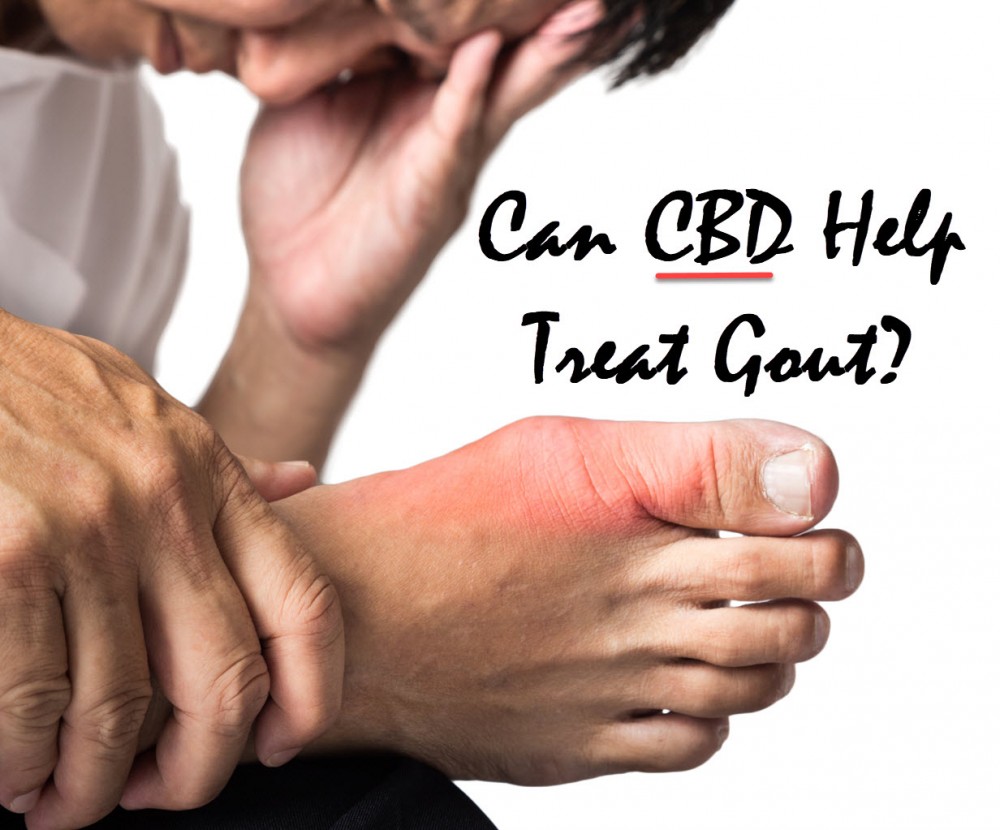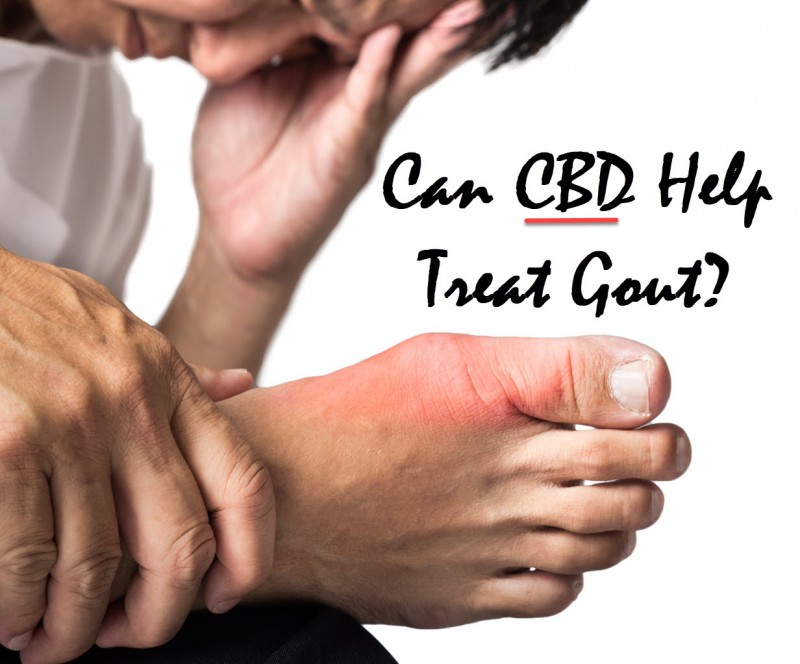Can CBD Treat Gout?

By now, you’re probably well-aware of the many uses of Cannabidiol (CBD). In the last few years, it’s become something of a wonder cure-all for a variety of ailments and illnesses. Studies have shown it’s effective in treating everything from epilepsy to insomnia, and a whole range of other maladies. One of them is gout.
What is gout?
Often called the rich man’s (or king’s) disease due to it being associated with the consumption of high amounts of red meat (something that was only reserved or could be afforded by the rich back in the Middle Ages and Renaissance Period), gout is a complex form of arthritis that affects the joints and is characterized by sudden and severe pain, swelling, tenderness, and redness in joints, usually at the base of the big toe. The affected joint is hot and swollen to the touch. Many gout sufferers say that even the weight of a blanket or sheet can be unbearable.
The inflammation is caused by a build-up of uric acid. Uric acid, which your body produces when it’s breaking down purine, is usually filtered out by the kidneys. However, when your body is overproducing it, it can go unprocessed, thus resulting in a build-up, which then produces sharp, needle-like crystals that form in the body’s joints and surrounding tissue, usually in the big toe, but also in places like the ankles, knees, elbows, wrists, and fingers.
Gout mostly affects men from the ages of 30 to 50. It doesn’t commonly affect women as they aren’t known for having high uric acid. However, when it does strike women, it’s usually after menopause.
Although it’s commonly associated with red meat, there are also other risk factors involved.
Diet: Apart from red meat, organ meat and some types of seafood are also known to be high in uric acid, such as codfish, mackerel, mussels, scallops, anchovies, herring, and trout. Alcoholic beverages, especially beer, are also known to be culprits of uric acid. Obesity also increases your risk of developing gout.
Medical conditions: Conditions such as high blood pressure, diabetes, metabolic syndrome, and heart and kidney diseases all come with increased risk of gout. A family history of gout as well as the use of certain medications (ones that treat hypertension like thiazide diuretics and low-dose aspirin) can also increase your risk.
People have been getting gout for centuries. And people have been treating it with cannabis for just as long. According to research, civilizations as old as 2900 BCE used cannabis to treat gout and joint pain. In ancient China, cannabis was used to treat everything from menstrual pain, constipation, malaria, rheumatism, and, yes, you guessed it, even gout.
We’ve come a long way since then. Today, we no longer rely on anecdotal evidence. Numerous scientific studies have been done on cannabis’ healing properties. When it comes to treating arthritis, CBD’s benefits have been well-documented.
In 2018, two studies were published in two notable medical journals, first in the Current Opinion on Pharmacology, which showed cannabinoids’ potential in treating pain associated with osteoarthritis, which causes the degeneration of bones and cartilage. It also noted the body’s endocannabinoid system’s crucial role in managing pain.
The other study was published in the Journal of Headache Pain. It found that cannabis that was particularly high in the terpenes caryophyllene and myrcene were especially effective in treating migraines, headaches, and other pain disorders, including arthritis, of which gout is one type.
Even in 2015, in a study published in the European Journal of Pain, researchers explored the effects of topical CBD in a rat model of arthritis. The results showed that it had long-lasting therapeutic effects, without having any negative side effects or psychoactive effects. The study concluded: “Thus, the use of topical CBD has potential as an effective treatment of arthritic symptomatology.”
Conventional Western medicine would recommend NSAIDs like Advil to deal with the pain associated with gout. However, NSAIDs come with risks like stomach bleeding and the risk of developing stomach ulcers. Meanwhile, CBD does not cause any of these adverse side effects and is only toxic if you consume 20,000 mg of it. That’s between 13 and 200 entire bottles of CBD tincture at once, which is almost impossible.
In addition, unlike conventional medication that only targets one area, CBD is beneficial across a wide range of areas. If you’re taking it to address gout-related pain, chances are, it will also have a number of peripheral benefits including helping you sleep better, reducing anxiety, managing your mood, managing you appetite, and reducing overall inflammation in your body, not just in the joints.
But don’t just expect the gout to disappear overnight after one transdermal CBD application. It’s also a good idea to use topical CBD in conjunction with oral CBD to address the inflammation in your kidneys, which can’t be rubbed with CBD tincture for obvious reasons.
MARIJUANA FOR GOUT, READ MORE...
CAN MARIJUANA HELP WITH GOUT, READ THIS!








